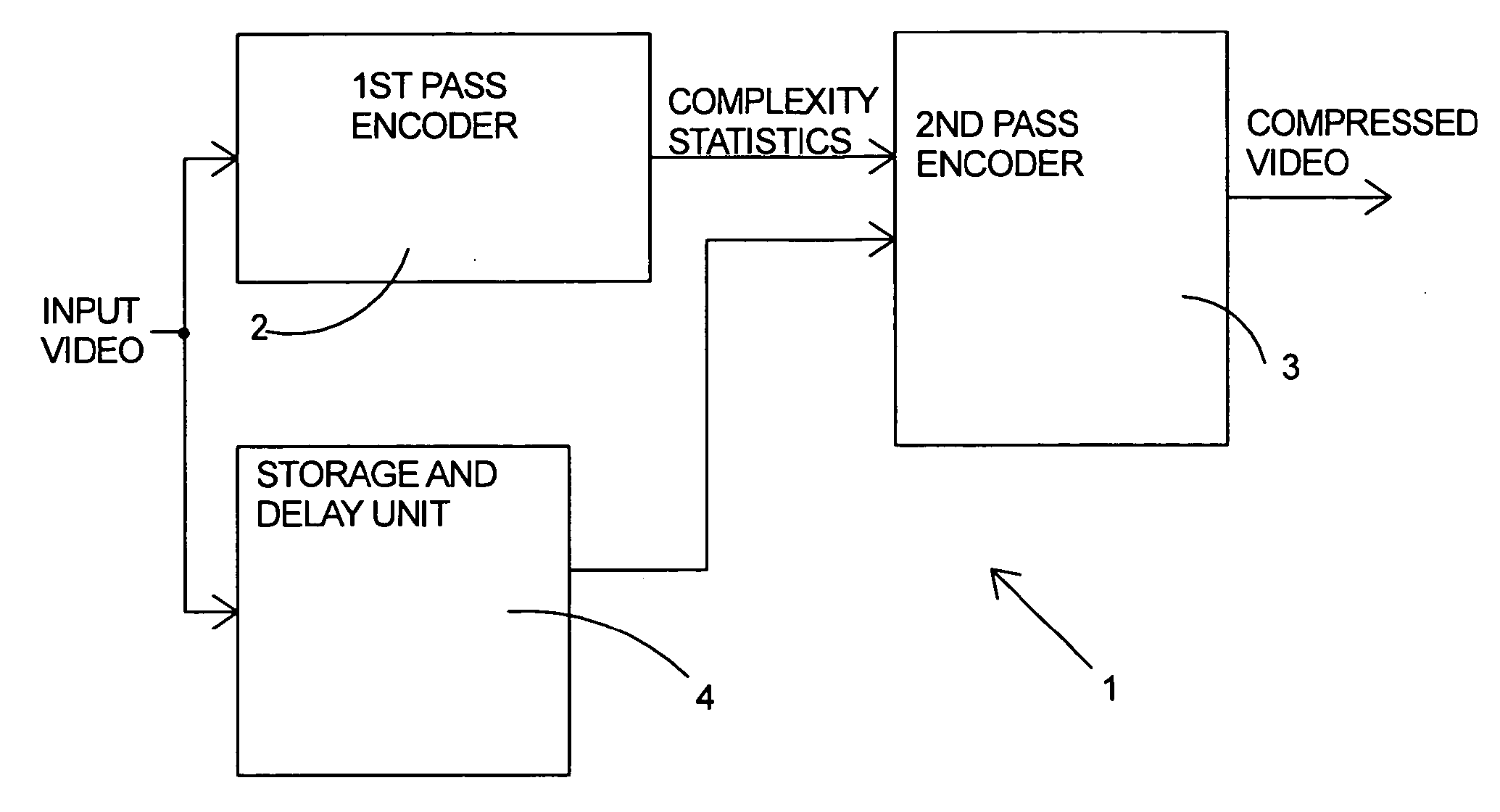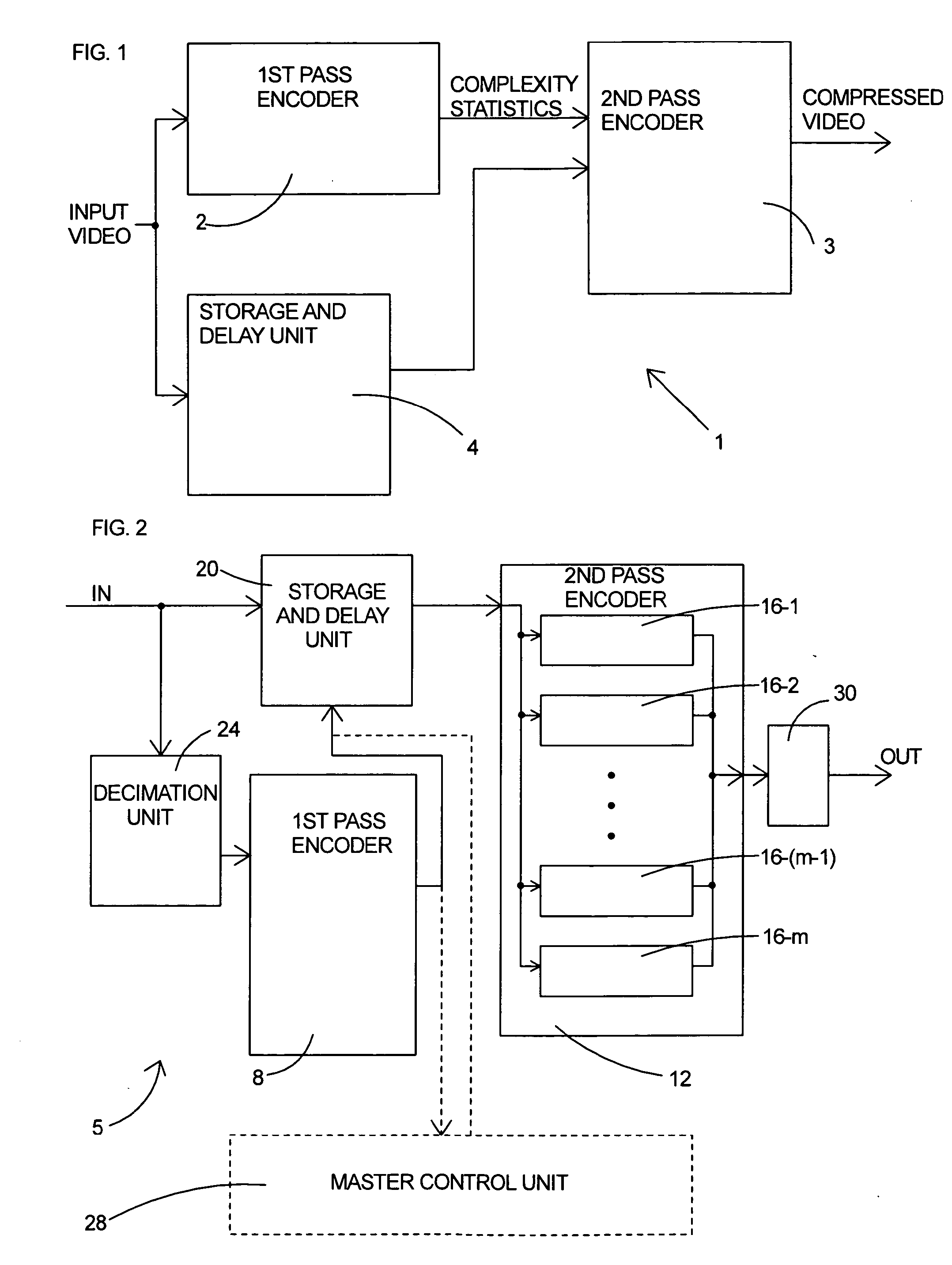Parallel Rate Control for Digital Video Encoder with Multi-Processor Architecture and Picture-Based Look-Ahead Window
a multi-processor architecture and look-ahead window technology, applied in the field of h 264, can solve the problems of decoder buffer overflow, decoder buffer empty, or underflow,
- Summary
- Abstract
- Description
- Claims
- Application Information
AI Technical Summary
Benefits of technology
Problems solved by technology
Method used
Image
Examples
Embodiment Construction
[0030]The embodiments of the present invention described below are not specific to any one video coding standard. However, it is assumed for the purposes of this description that the video coding standard in question utilizes conventional techniques, such as dividing individual pictures, or frames, into macroblocks and dividing a plurality of sequential pictures into a group of pictures (GOP) for encoding purposes.
[0031]Referring to FIG. 2, a single channel dual pass encoder 5 receives an unencoded video stream IN as input and transmits an encoded SPTS OUT (VBR or CBR) as an output. The dual pass encoder 5 has a multi-processor architecture and includes a low complexity 1st pass encoder 8 and a high complexity 2nd pass encoder 12. The 1st pass encoder 8 is a conventional single processor encoder and the 2nd pass encoder 12 is a pipelined parallel encoder as described above and includes m processing units 16-x (x=1 . . . m). Each picture j of the video stream IN is received by a stor...
PUM
 Login to View More
Login to View More Abstract
Description
Claims
Application Information
 Login to View More
Login to View More - R&D
- Intellectual Property
- Life Sciences
- Materials
- Tech Scout
- Unparalleled Data Quality
- Higher Quality Content
- 60% Fewer Hallucinations
Browse by: Latest US Patents, China's latest patents, Technical Efficacy Thesaurus, Application Domain, Technology Topic, Popular Technical Reports.
© 2025 PatSnap. All rights reserved.Legal|Privacy policy|Modern Slavery Act Transparency Statement|Sitemap|About US| Contact US: help@patsnap.com



